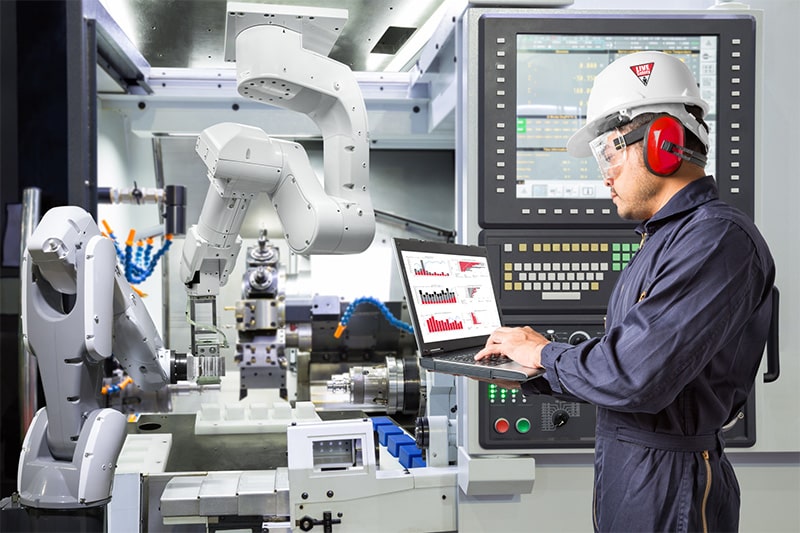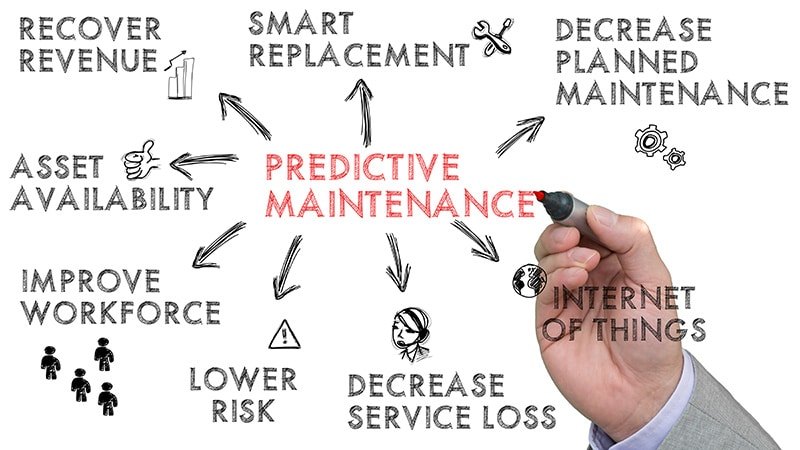In manufacturing, the pursuit of reduced downtime, increased product quality and improved profit margins are ongoing concerns for any business hoping to stay competitive. Predictive maintenance is one of the most effective ways to achieve these goals, and plays a critical role in optimizing production and productivity. If you are interested in reaping the benefits of predictive maintenance, vibration analysis is a good place to start.
What is vibration analysis in maintenance

There are many tasks that comprise predictive maintenance. Vibration analysis is one of the most crucial. It is extremely effective in identifying the beginnings of equipment wear and potential breakdowns or degradation in processes — the backbone of predictive maintenance. With the right equipment in place, vibration analysis can also enable root cause analysis, zeroing in on the exact cause of an impending problem — critical in equipment with multiple rotating parts.
- What is the purpose of vibration analysis? By detecting, measuring and analyzing vibration in rotating parts, vibration analysis is able to “predict,” to an accurate degree, whether the equipment will soon be in need of maintenance. Through the use of vibration analyzer technology for discrete rotating parts, vibration analysis can also aid in root cause analysis.
- Why is vibration analysis critical? As rotating equipment and components begin to wear, they do not operate to the tolerances for which they are intended. This can lead to a reduction in production quality and accuracy, as well as an increase in scrap material and the potential for missed deadlines, due to production errors. Through early detection, vibration analysis reduces the need for unplanned downtime, prevents the costly scenarios described above, and cuts troubleshooting and maintenance time through root cause analysis.
- How is vibration measured, and how does analysis work? Vibration is most often measured through sensors incorporated into rotating equipment. These sensors are able to detect frequencies and types of vibration — measuring displacement, velocity and acceleration along all three axes of movement. Using a vibration analyzer, this information is then compiled, analyzed and compared against known “red flag” vibration signatures, as well as historical performance data for that particular piece of equipment. Advanced processes such as random vibration analysis may also be applied. Note that vibration signatures differ across varying components, so it is critical to be equipped to analyze each unique piece of equipment.
- For what types of equipment is vibration analysis used? It can be used for any equipment with rotating parts and components — pumps, turbines, conveyor components, compressors, gears, fans, rotors and more. By detecting abnormal operation in these types of components, predictive maintenance can eliminate production issues before they even occur.
- What kinds of issues does vibration analysis prevent? Production quality issues are usually the signal that reactive maintenance is required — part errors, unacceptable tolerances, poor surface finishes and more. By the time these issues are detected — in a reactive maintenance environment — parts must be discarded or reworked, excess scrap has been generated, and turnaround time has already been delayed. Vibration analysis as a part of predictive maintenance can prevent these kinds of problems. This type of data can also enable root cause analysis — vastly reducing troubleshooting and repair time, and streamlining future maintenance processes.
The benefits of a proactive approach
Vibration analysis, as part of a predictive maintenance plan, offers numerous benefits. These include:
- A significant reduction in unplanned downtime
- More control over downtime and maintenance processes
- Improved inventory practices and efficiency — more “just in time,” less “just in case”
- Root cause analysis for more efficient maintenance
- A reduction in material costs, thanks to less scrap and fewer discards
- Enhanced product quality with machinery running at rated tolerances more consistently
- Reduced maintenance costs
As part of our predictive maintenance services, ATS performs vibration analysis, covering every aspect of the process — sensor implementation and installation, data collection and analysis, maintenance improvement tasks, and more. To learn more about our vibration analysis services as part of our overall industrial maintenance offering, contact us today.


